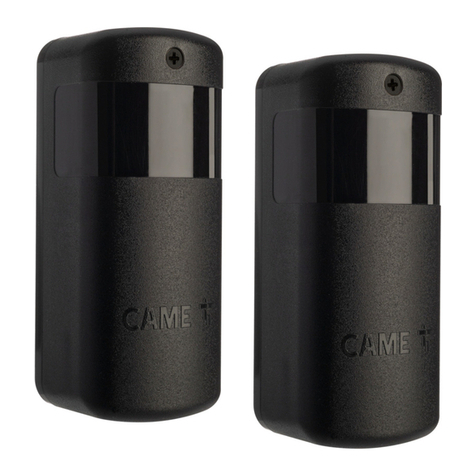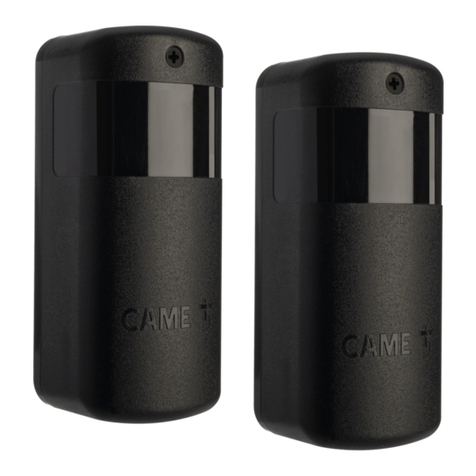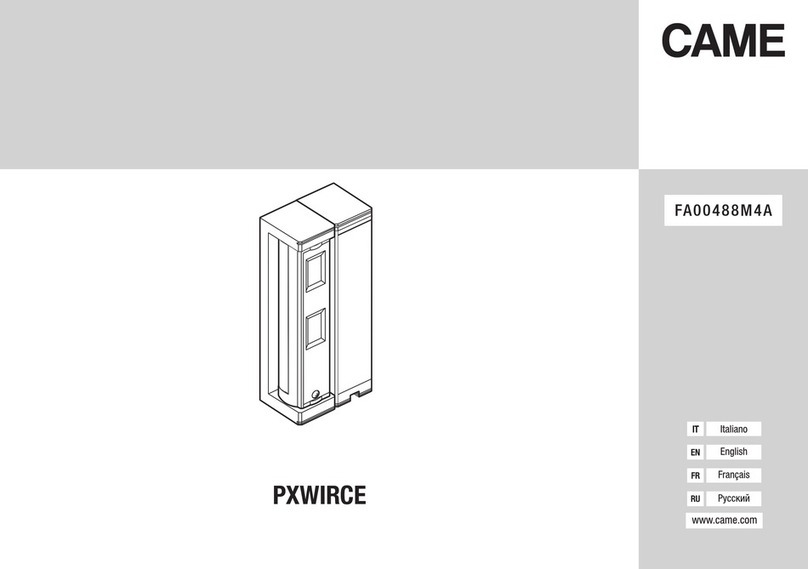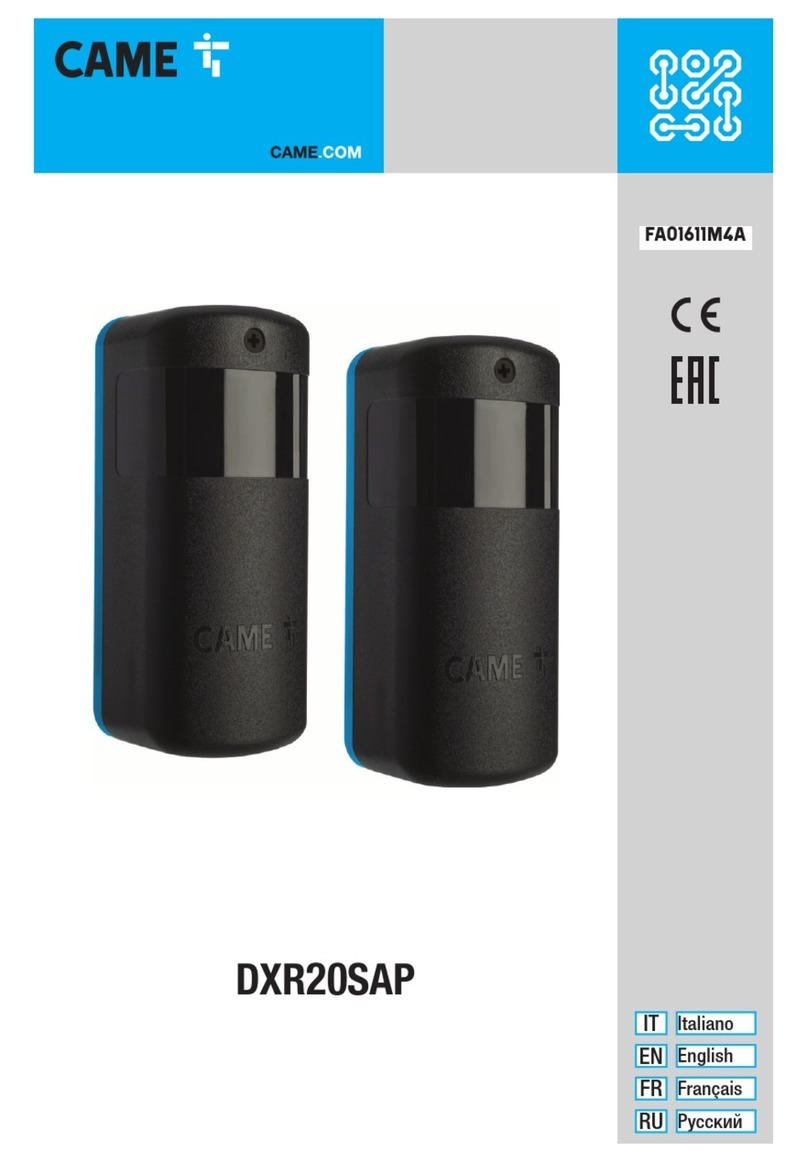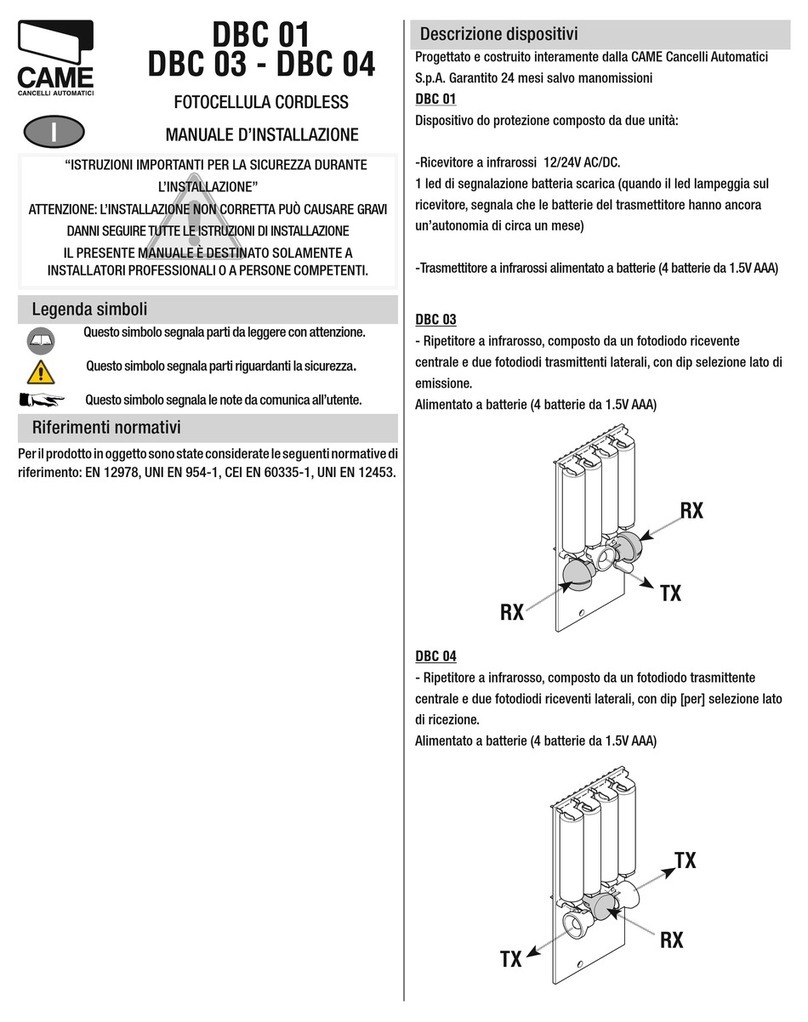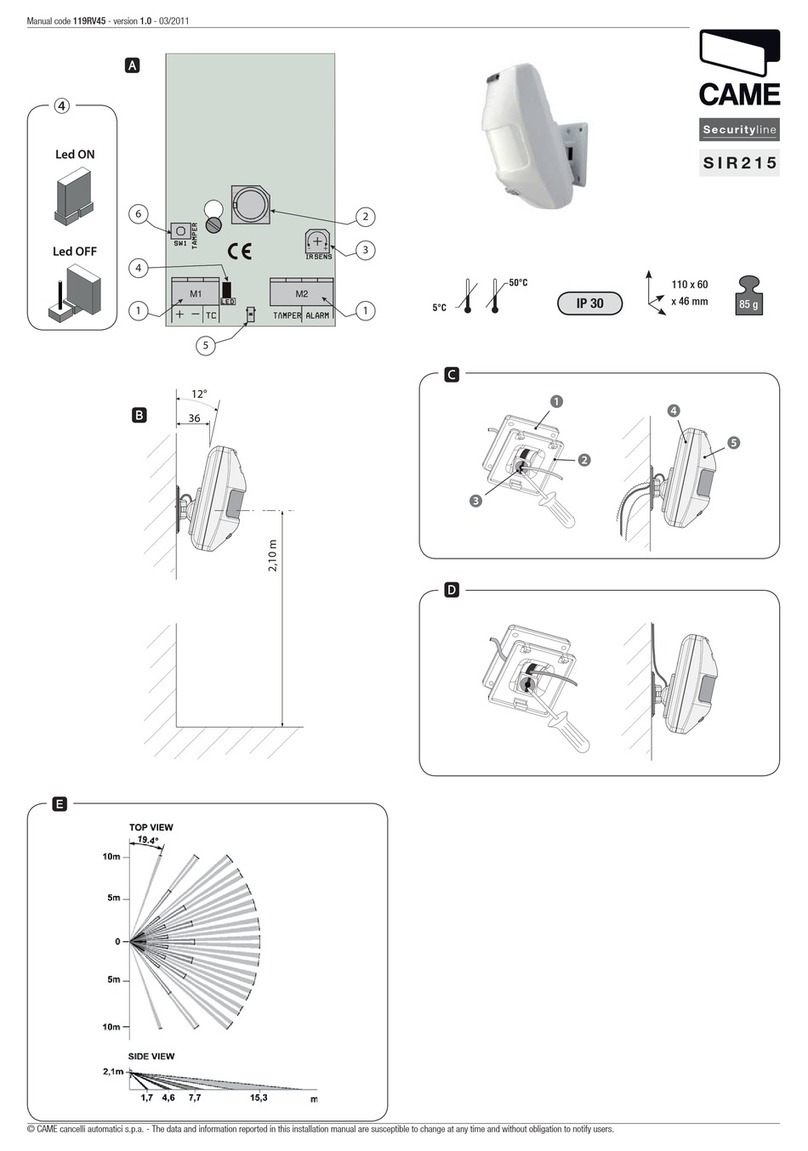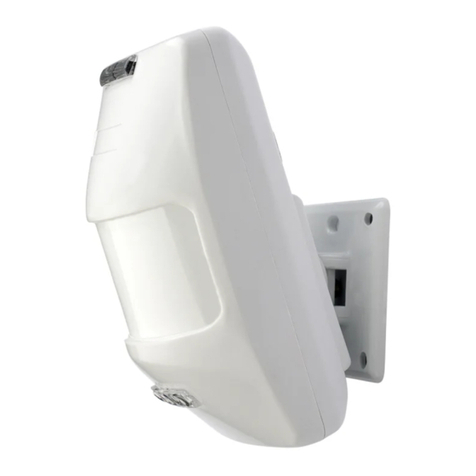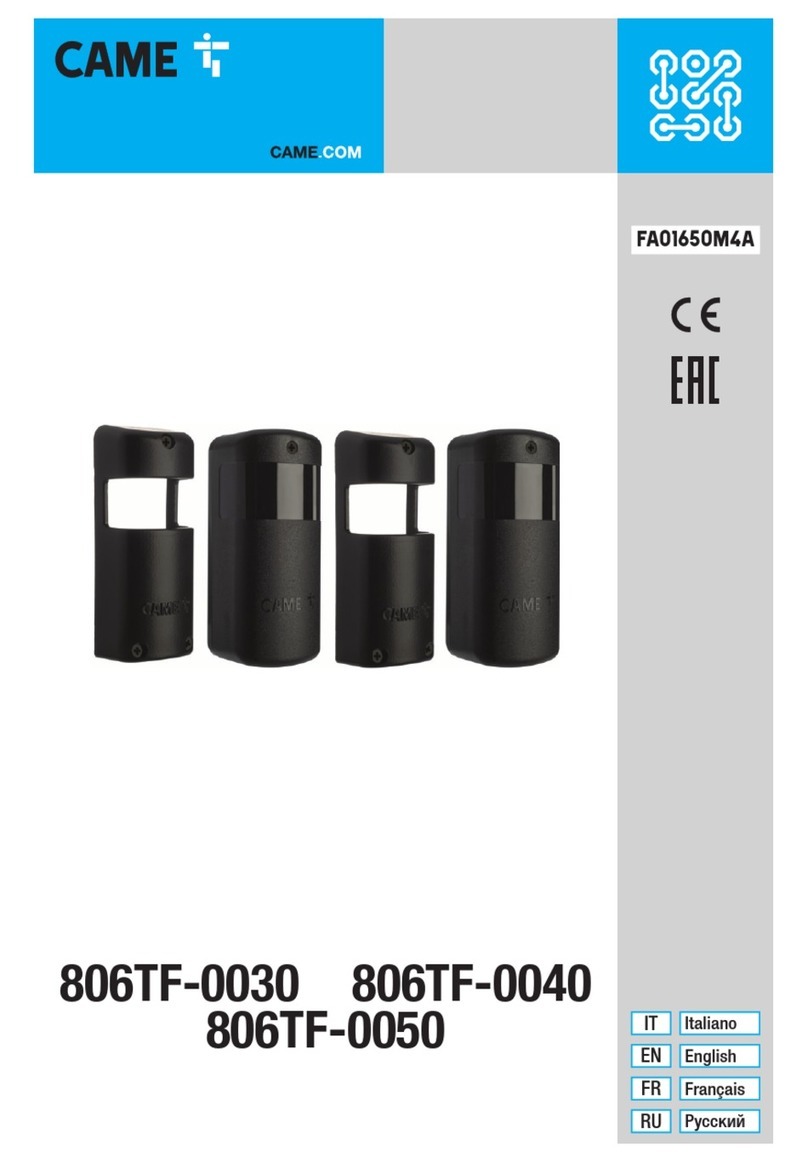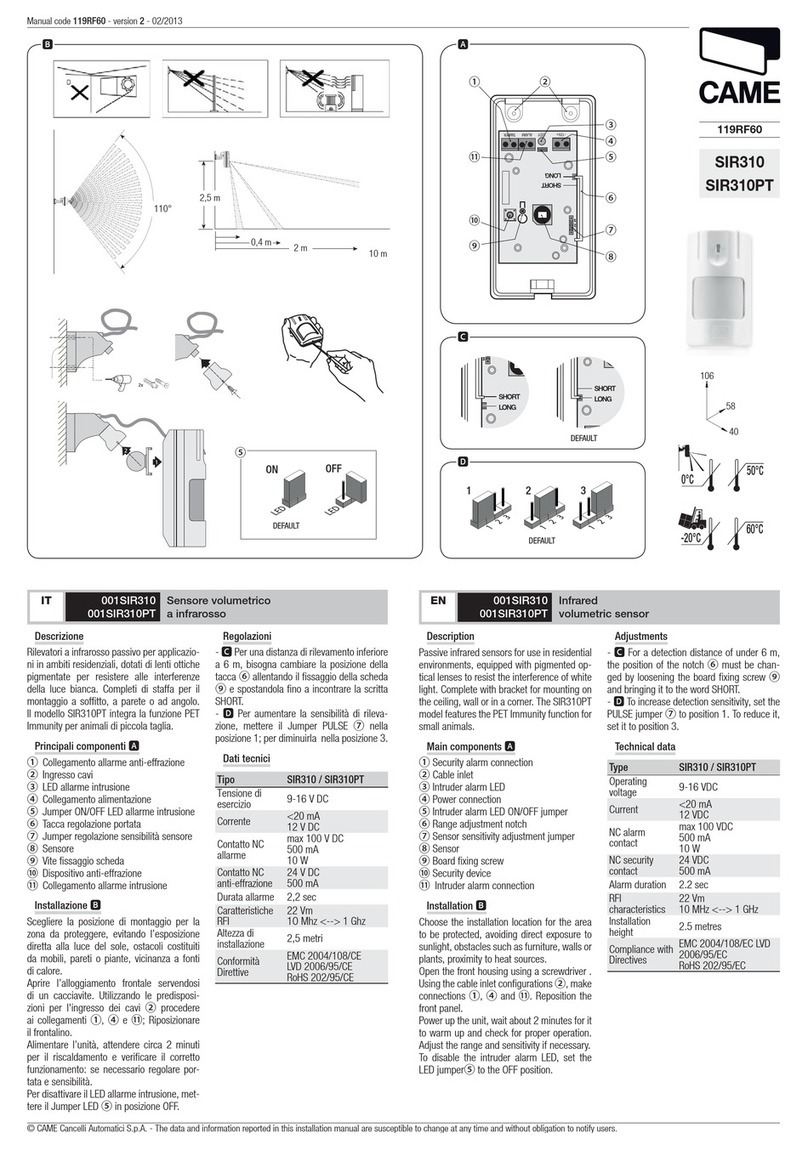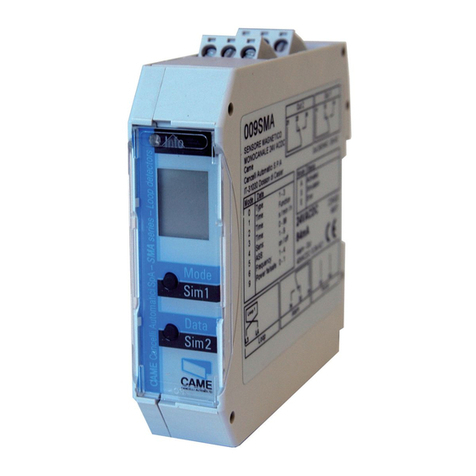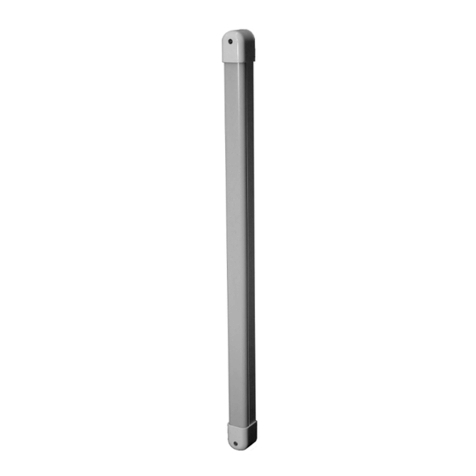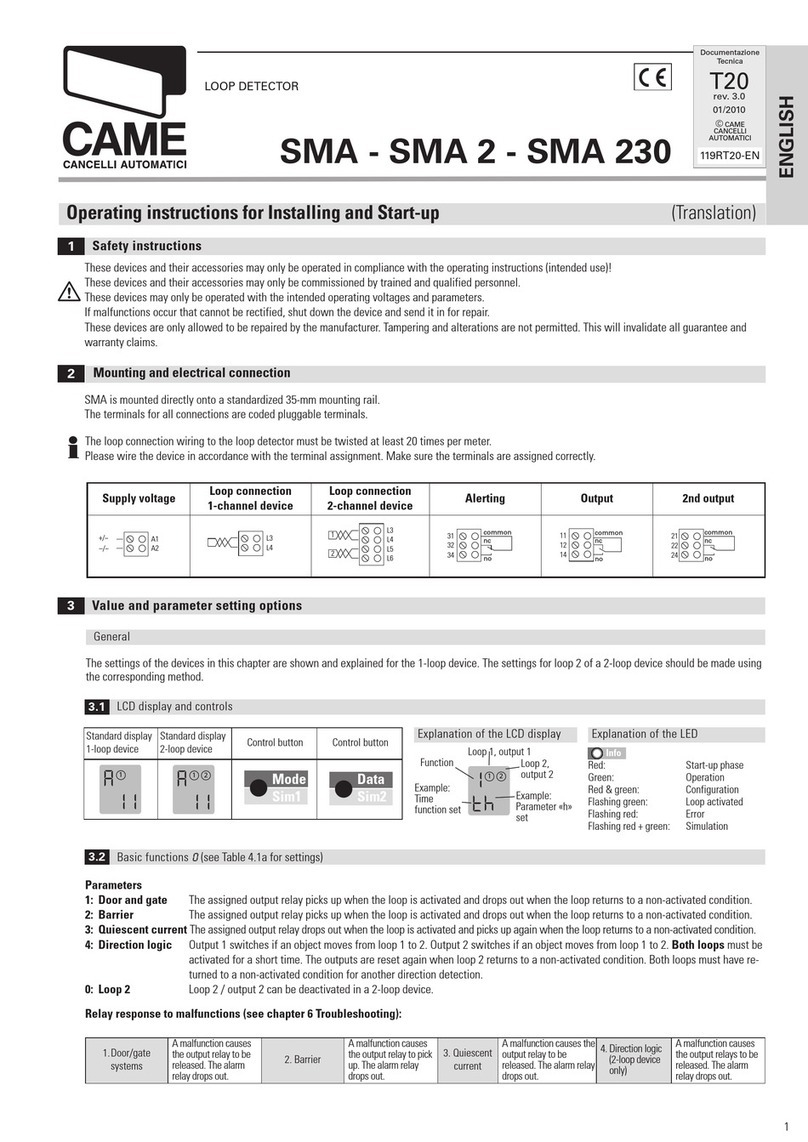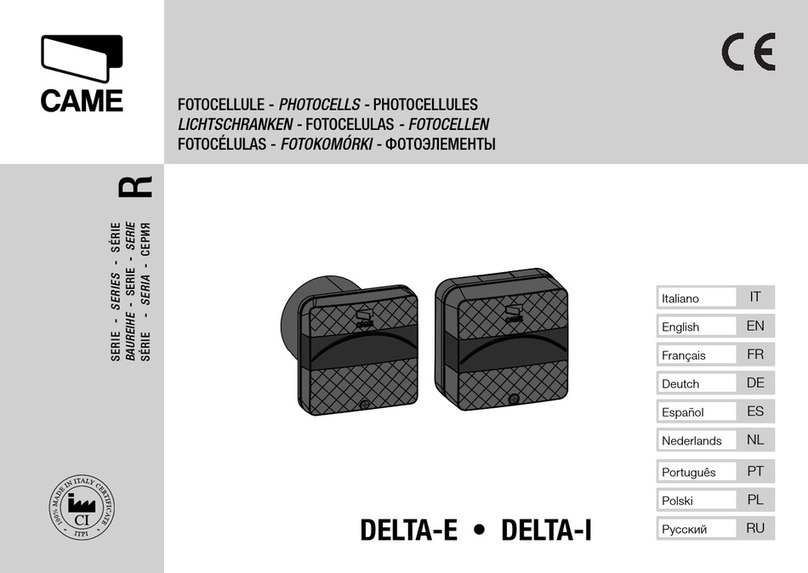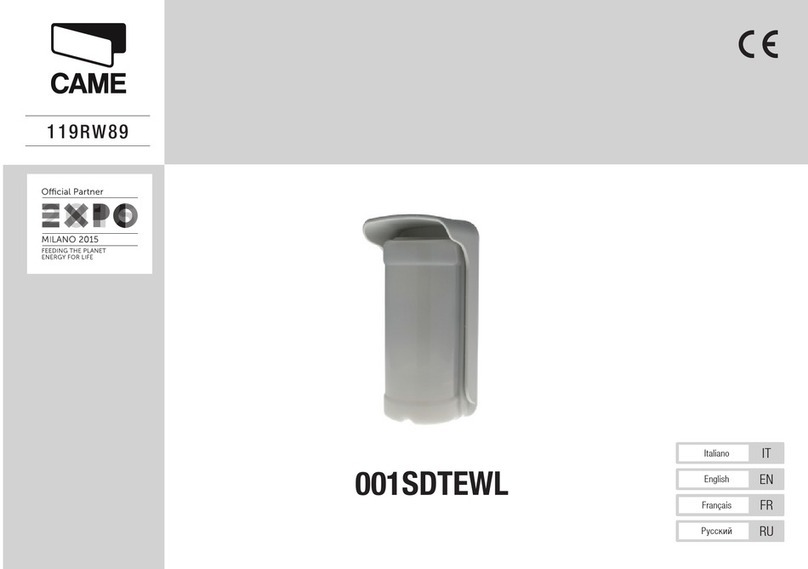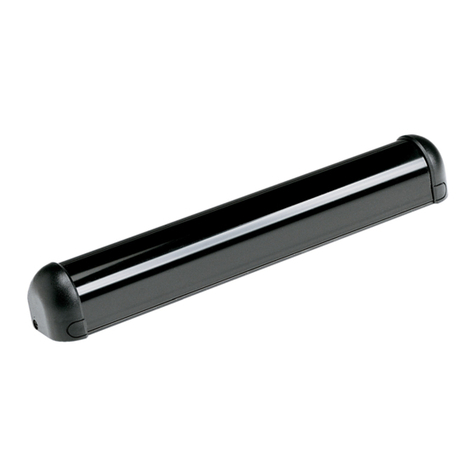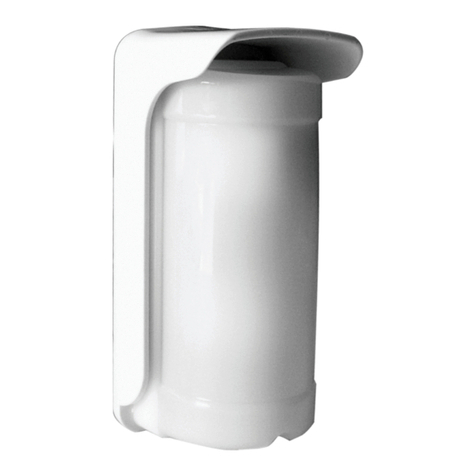
8 - 119RW88 ver.2 07-14
NOTA. Prima di alimentare il sensore accertarsi che RV1 e
RV2 siano regolati per la massima portata (ruotati com-
pletamente in senso orario). In caso contrario il sensore
potrebbe ricevere un segnale troppo debole oppure non
riceverlo affatto: i LED non si accenderanno.
Accensione
Prima di essere alimentato il sensore deve essere impostato
come segue:
-RV1e RV2ruotati completamente insenso orario e;
- Dip1, Dip2, Dip5, Dip6 in posizione OFF, Dip3 e Dip4 in
posizione ON e Dip7 a scelta ;
- JP1 aperto , JP2 e JP3 chiusi .
Le impostazioni possono essere modicate di seguito senza
togliere l'alimentazione.
A questo punto il sensore è pronto per 'l'inizializzazione'
che durerà 5 secondi.
Inizializzazione
Alimentando il sensore, si accenderanno in modo sso i LED
DL1 e DL2. Dopo circa 5 secondi, i LED si spegneranno e il
sensore emetterà alcuni 'beep' per confermare l'avvenuta
inizializzazione. In caso di rilevazione durante questa fase, il
tempo di inizializzazione sarà prolungato.
Perre-inizializzareilsensoretoglierel’alimentazione,premere
il tasto tamper (il tamper deve essere abilitato con JP1 =
APERTO),vericarecheilsensoresiaimpostatocome descritto
sopra e dare nuovamente alimentazione.
Altezza di installazione B
Orientamento B
Attraversamento dell'area di rilevazione
B Il sensore rileva agevolmente in tutta la portata
BIl sensore potrebbe rilevare a distanza inferiore della
portata massima
Unavoltassatoilsensore,perorientareletestineèconsiglia-
bile allentare leggermente il serraggio delle viti degli snodi.
Regolazione della portataC
L’area di rilevazione è quella in cui ENTRAMBE le tecnologie
(infrarosso C e microonda C) rilevano. Pertanto è
necessario regolare sia l’ORIENTAMENTO che la PORTATA di
entrambe le testine in modo che le due aree di rilevazione
siano il più possibile coincidenti.
NOTA. Seguire l'ordine di regolazione indicato di
seguito.
Regolazione dell'infrarosso
1-ImpostareilDIP7a secondadella delladimensionedell'area
da proteggere;
Portatamassimano a 18
m. Regolazione 9 ÷ 18 m
Portatamassima noa12
m. Regolazione 3 ÷ 12 m
Ad ogni spostamento del DIP7 occorre attendere 10÷20
secondiche il sensoresi stabilizzinellanuovaimpostazione.
2- Impostare il DIP5 su ON e DIP6 su OFF per abilitare il walk
test del solo infrarosso. Il LED DL1 (infrarosso) si accenderà
sso mentre il LED DL3 (allarme/trasmissione) si accenderà
ad ogni rilevazione dell'infrarosso.
3- Posizionare al MASSIMO il trimmer RV1 D.
4- Orientare la testa infrarosso in direzione dell’area da
coprire E.
5-Regolareilsensoreinfrarossomuovendosiall’internodell’a-
rea di rilevazione: il LED blu si accenderà quando l’infrarosso
rileverà il passaggio.
Se la portata non è quella desiderata alzare gradualmente
la testa dell'infrarosso Fe diminuirne la regolazione G.
Ripetereitest no araggiungerelaportatadesiderataH.
Regolazione microonda
1- Impostare il DIP5 su OFF e DIP6 su ON per abilitare il walk
testdellasolamicroonda.Il LEDDL2(microonda)si accenderà
sso mentre il LED DL3 (allarme/trasmissione) si accenderà
ad ogni rilevazione della microonda.
La regolazione della microonda è indipendente da quella
dell'infrarosso e la posizione di DIP7 non interviene sulla
regolazione della microonda.
2- Regolare il sensore microonda muovendosi all’interno
dell’area di rilevazione: il LED blu si accenderà quando la
microonda rileverà il passaggio.
Se la portata non è quella desiderata alzare gradualmente
la testa della microonda Ie diminuirne la regolazione J.
Ripetereitestinoaraggiungerela portatadesiderataK.
☞ Il soggetto può attraversare le aree senza provocare
allarme perché non viene rilevato da entrambe le tecno-
logie contemporaneamente L.
L’area di rilevazione della microonda M è più grande
di quella infrarosso M. Si può avere un falso allarme
a causa dell’attivazione non voluta dell’infrarosso (ad
esempio dal movimento di foglie) e della microonda che
rileva oltre l’area desiderata (ad esempio dal furgone
oltre la recinzione) M.
Installazione del sensore
Ilsensoreinfrarossoè sensibilealla“quantitàdicalore”emessa
da un corpo in movimento. La portata massima del sensore
(espressainmetri) èriferitaaduncorpoumanoedè pertanto
una misura RELATIVA N.
Regolazione della sensibilità
Ruotare completamente in senso orario i trimmer di rego-
lazione (RV1 e RV2) ed orientare le testine il più possibile
verso il basso. Diminuire progressivamente la sensibilità e






